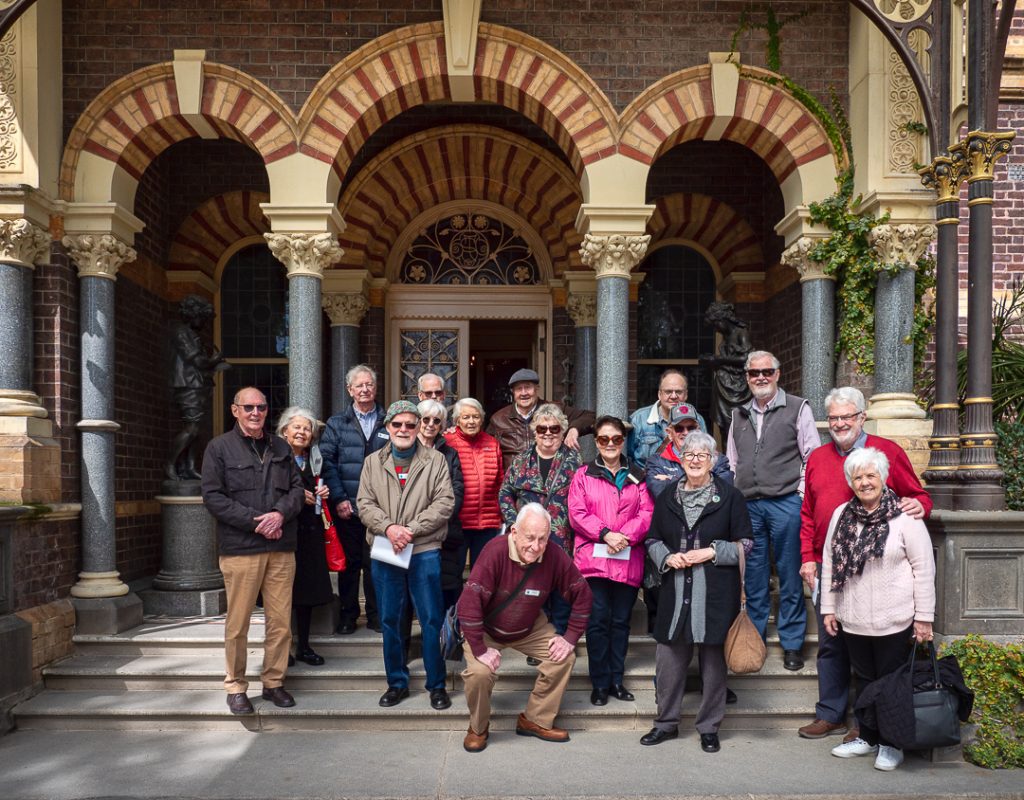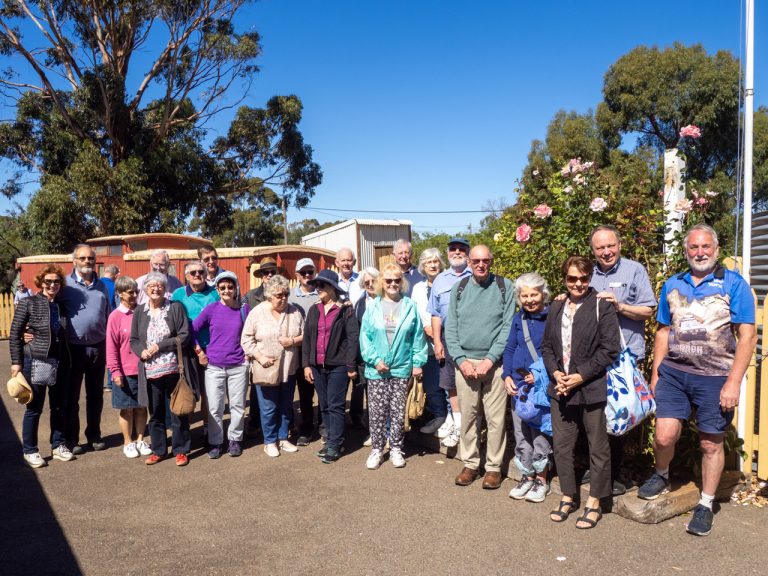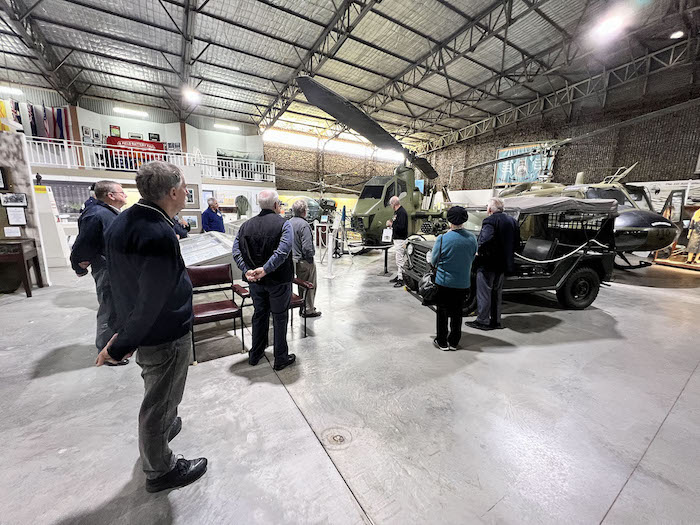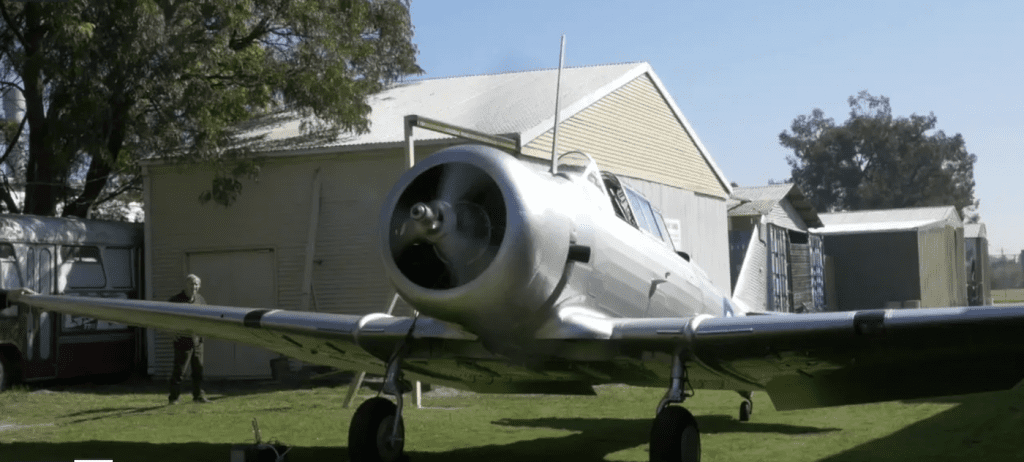Some Outings
Rippon Lea Visit

A group of enthusiastic members and partners visited Rippon Lea on 12th September.
We were split into two groups and shown the inside of the mansion by very knowledgeable tour guides.
Rippon Lea was originally built in1868 for Frederick Sargood, who made his money selling soft goods on the goldfields. The property was a large self-sufficient farm, about twice the size it is now. Originally the mansion had 15 rooms; currently it has 33 rooms. Sargood moved in with his first wife and their nine surviving children.
There were 7 maids, a butler, 7 gardeners, a coachman and groom. Sargood was a typical man of the Victorian Age – visionary and practical. This resulted in an elaborate underground watering system being installed and the house having its own electricity supply. Unusually for its time, the house had internal toilets. Sargood was a keen gardener who was particularly interested in orchids and ferns. A large number of plants were imported.
When Sargood’s first wife Marion died giving birth to their 12th child in 1878, he returned to England. In 1882, he returned to Rippon Lea with his second wife. The mansion was extended with a second floor at the rear of the building, as well as the tower being built.
Sargood was knighted in 1890 and his business continued to prosper with the mansion continuing to be renovated and developed until his death in 1902.
Rippon Lea was sold having several owners before it eventually being bequeathed as “A Gift to the Nation” in 1972 when on its owner Mrs Louisa Jones’ death, passed to the National Trust as owner.
After the tour, some of our group walked through and enjoyed the extensive gardens. Some of us then enjoyed a relaxing lunch at a local café.
Overall, the outing was a very enjoyable experience. Thank you to Bruce Wilson for his choice of venue and his organisation of the outing.
Tony Schou
.
Maldon Self Drive Trip

Twenty four of our members and their partners had a wonderful time last week on our self drive trip to Maldon and Castlemaine. This type of trip gave us the luxury of being together as a group as well as some independence while travelling. It’s a good combination.
Our trip began when we met for lunch at Malmesbury. The local bakery sold good pies and sandwiches which we ate in the nearby botanical Gardens.
We had a quick look at the fascinating Malmesbury viaduct which was built in the 1880s and is still in use today before moving on to Castlemaine where we spent some time on a self guided tour of the historic buildings in the town. Our day ended as we settled into our motel at Maldon and had dinner at the Kangaroo Hotel.
.
On our second day we had a relaxed morning with a walk around the town of Maldon and it’s goldfield era streetscapes. There was time to visit some local historic areas that related to mining before lunch in one of the town’s cafes. In the afternoon we rode on the goldfields railway – a steam powered train from Maldon to Castlemaine.
We had just enough time for a quick beer at the Railway Hotel before our chartered coach brought us back to Maldon. We had another sumptuous meal at the historic Kangaroo Hotel before returning to our motel.
On the final day of our trip we made our way home are individually following various routes through nearby goldfields towns
Day Trip to Phillip Island
Twenty Eight of our members and some guests had a wonderful day at Phillip Island on November 26. After a comfortable drive in our chartered coach we spent most of the morning looking at the artefacts and memorabilia at the National Vietnam Veterans Museum. The museum cafe put on a delicious lunch which we all enjoyed.

In the afternoon, we moved on to the Antarctic Experience at the Nobbies Centre and learned a lot about wildlife in the frozen continent. It was especially interesting to be able to see us on an ‘artificial reality’ screen in the company of killer whales and penguins. This was the last of our three trips that was subsidised by a grant from the Boorondara Council.

Three Day Benalla Self Drive Trip
National Aviation Museum, Moorabbin
Our Members set out from Box Hill after car pooling and enjoyed a ninety minutes conducted tour of the Museum, both undercover and outdoors. From vintages planes, including an alleged petrol tank from the Red Baron’s aircraft shot down in April, 1918, to a range of RAAF fighters, bombers and helicopters, domestic airlines, together with a wide range of single engine aircraft, gliders and engines, conventional to jet.
An interesting display and commentary from our Volunteer guide. Lunch followed at the local RSL Club before heading for home.





